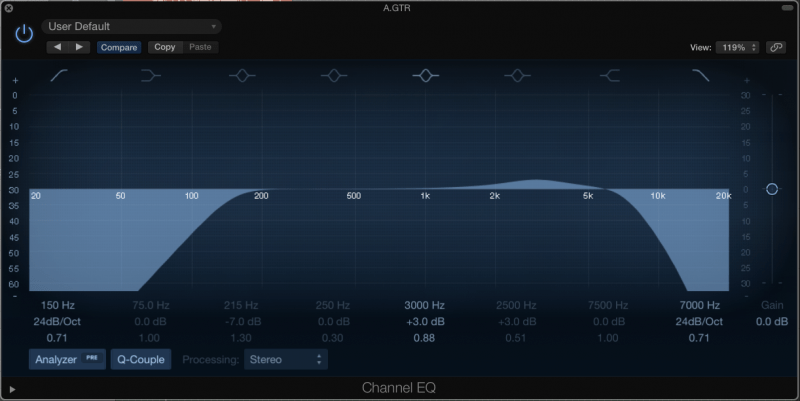
Bandwidth – The amount of space on the frequency spectrum that the sounds of an instrument are being produced at. For example, an average electric guitar has a bandwidth of 80Hz-5kHz, as the instrument cannot produce sounds above or below those frequencies.
Equalization (or EQ) – A sound processor that can boost or cut particular frequencies in a sound.
Filter – a feature of an EQ that cuts the sound of the low end or the high end of the frequency spectrum. These are known as a High Pass Filter (HPF) and a Low Pass Filter (LPF), respectively.
Hertz (or Hz) – The unit of measurement for frequencies. After 1,000Hz, the unit is measured in Kilohertz (or kHz).
Highs (or High end, Top end, Treble, or Air) – The section of the frequency spectrum above 8kHz.
Kilohertz (or kHz) – 1000x the unit of measurement for frequencies. 1 kHz = 1,000 Hz.
Lows (or Low end, Bass, or Sub-bass) – The section of the frequency spectrum between 60Hz-200Hz.
Mids – The section of the frequency spectrum between 600Hz-3kHz.
Q – the width of a band in an EQ.
Room resonances (or Standing waves) – Every room has frequencies that build up more than others. These frequencies can mask the pleasant elements of a sound. By finding these frequency build-ups and cutting them using an EQ, we can improve the sound of a recording.
Spectrum analyzer – a visual graph that shows what frequencies are being produced in real-time by a sound.
(See Acoustics for more terms on frequencies and sound)




